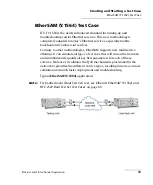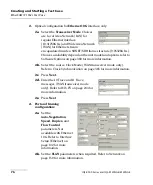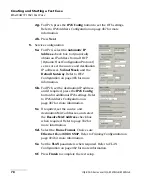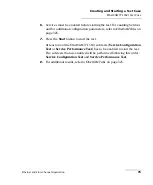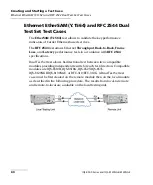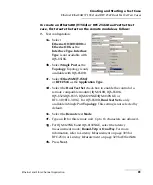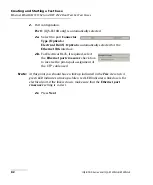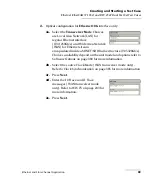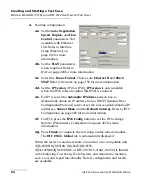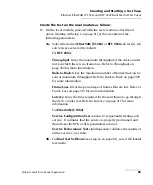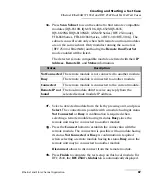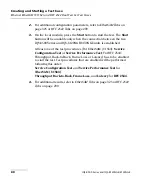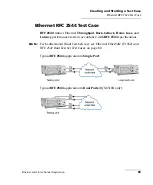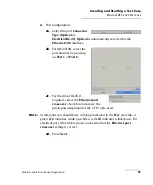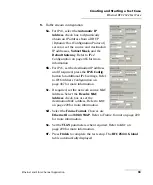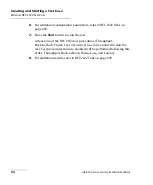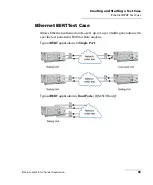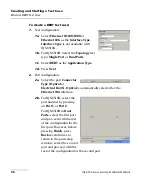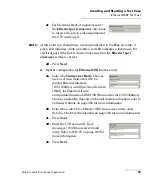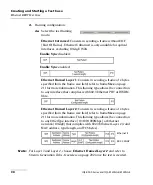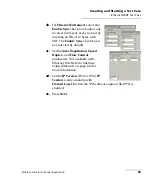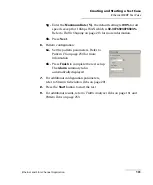
Creating and Starting a Test Case
Ethernet and Fibre Channel Application
87
Ethernet EtherSAM (Y.1564) and RFC 2544 Dual Test Set Test Cases
1e.
Press
Scan Subnet
to scan the subnet to find remote compatible
modules (IQS-8510B, IQS-8510G, IQS-8525/IQS-8535,
IQS-8120NGE/IQS-8130NGE, AXS-850 Series (RFC 2544 only),
FTB-860 Series, FTB-810/880 Series, or RTU-310/RTU-310G). The
subnet scan will work only when both remote and local modules
are on the same subnet. Only modules running the same test
(RFC 2544 or EtherSAM) and having the
Remote Dual Test Set
mode enabled will be listed.
The detected remote compatible module are listed with their
IP
Address
,
Remote ID
, and
Status
information.
1f.
Select a detected module from the list by pressing on it, and press
Select
. The connection is possible with a module having its status
Not Connected
or
Busy
. A confirmation is required when
selecting a remote module having its status
Busy
since the
remote unit may be connected to another module.
1g.
Press the
Connect
button to establish the connection with the
remote module. The connection is possible with a module having
its status
Not Connected
or
Busy
. A confirmation is required
when selecting a remote module having its status
Busy
since the
remote unit may be connected to another module.
Disconnect
allows to disconnect from the remote module.
1h.
Press
Finish
to complete the test setup on this local module. For
RFC 2544, the
RFC 2544
’s
Global
tab is automatically displayed.
Status
Description
Not Connected
The remote module is not connected to another module.
Busy
The remote module is connected to another module.
Connected
The remote module is connected to the current module.
Remote IP not
found
The local module didn’t receive any reply from the
selected remote module IP address.

